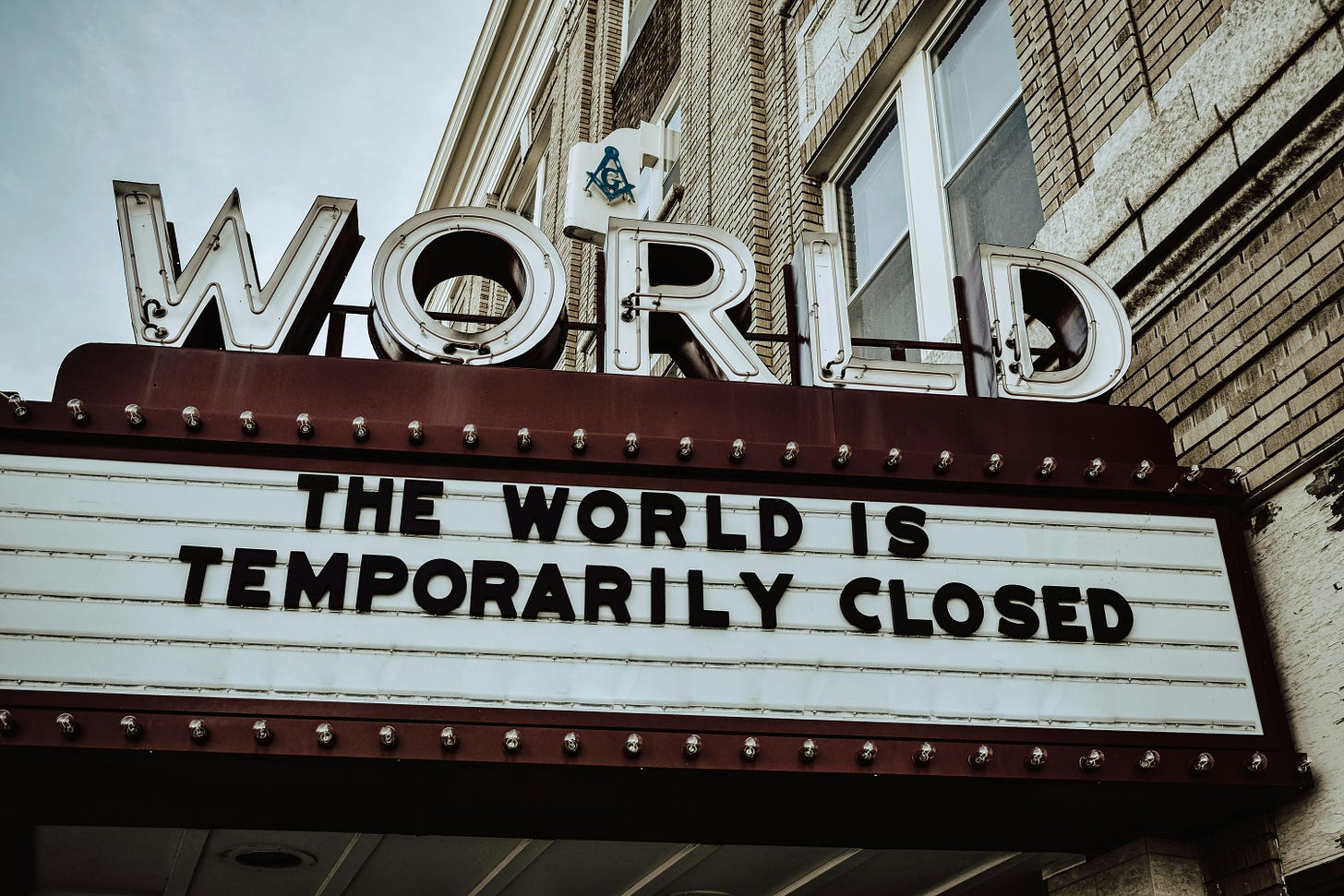Photo by Edwin Hooper on Unsplash
“…and your friend fluttering her hand in the direction of your mask during lunch on the freezing back patio at Minnow, saying, So, um, how long are you planning to do this?” ~Didi Wood, “A Three Hour Tour”
Hi friends!
I’ve decided to start a new feature here. My aim is to, from time to time, discuss one GREAT flash piece with its writer. For this inaugural post, I’m featuring Didi Wood’s incredible flash, originally published in Smokelong Quarterly, entitled, “A Three Hour Tour.” Please read it if you’ve not already!
First, a little about the author: Didi Wood's stories appear in SmokeLong Quarterly, Ghost Parachute, Okay Donkey, Fractured Lit, and elsewhere. Her work has been chosen for the Wigleaf Top 50 and nominated for Best of the Net and Best Small Fictions. More at didiwood.com.
KF: Thanks so much for letting me interview you for The Art of Flash Fiction! I talk a fair bit about the "essential urgency" of flash fiction. I love "A Three Hour Tour" and feel like it addresses an urgent topic, so powerfully and deftly. First, can you tell me why you chose to take on such a "big" and current topic? I know there was some talk about "pandemic stories" (I wrote one myself!) and folks seem divided on covering that topic...
DW: I tend to avoid current topics – there’s so much information and misinformation flying around, and I worry about missing or misconstruing something. Although I have strong feelings about the pandemic response, I had no desire to wade into the discourse with a “pandemic story.” But of course the issues occupying our thoughts find a way into the work. In a Tommy Dean workshop last year, we were given a prompt about setting as conflict and told to start with something menacing to our main characters, and my mind went immediately to the woman I’d just seen at the supermarket salad bar, coughing hard, over and over, palm pressed to her chest, maskless, and that lured me into this story. For me, that’s the only way into such a “big” topic – look for a small, tantalizing something that glimmers just ahead and follow it. While it started as a pandemic story, “A Three-Hour Tour” ended up being more about the relationship between two sisters during a time of extreme political polarization, and the realization that some boundaries can’t be crossed.
KF: I love the structure of this piece! I feel like it heightens the emotion of the story, in one long sentence, but broken up with white space....can you talk a little about your decision making process re: structure?
DW: When I start a piece, I have little sense of what it will look like or what it’s even about. My process involves playing with phrases in my mind until one “sings” enough to launch me into a story. Rhythm and sound come before actual words, and early on I could feel that this story would be one long sentence, a series of moments each beginning with that cumulative, escalating and. I drafted it with line breaks mainly so I could keep track of the individual parts; in revision, I tried eliminating them but felt that undercut the tension. I like how the breaks reinforce the main character’s anxiety and isolation, functioning as these huge gulps of air between moments, and also how they foreshadow the sister’s breathing at the end. I wish I could say Yeah, sure, I meant to do that, but honestly it’s less intention and more noticing what’s there once the words are on the page, and then looking for ways to tighten it up and make it more that.
KF: That’s a great use of white space, as “huge gulps of air,” and as foreshadowing. I think we flash writers are leaning in more and more to the techniques of the poets. Didi, I feel like your story is powerful and emotionally evocative without being heavy-handed. Did you achieve this right away or did it take many drafts to strike the right note?
DW: I’m relieved to hear that! In “real life” I fear being misunderstood and tend to overexplain; in fiction, I can be thoughtful and strategic about suggesting more than I say, which helps engage the reader mentally and emotionally. I knew I had to avoid bashing readers over the head with facts and figures, and instead to focus on the personal, specific experiences of the main character. Voice is vital – I tend to stall if I don't hear it – and the overall feel of this (tense, relentless, resigned) was there from the start. When revising, I looked for ways to include more pertinent, particular details – mainly the Gilligan’s Island references, including the title and the flashback, which ended up being crucial to the emotional heart of the story. I love looking over a draft and finding places where I can pry it open a bit and drop in or tease out something that adds depth or resonance.
KF: I love everything about this story. The title is perfect and that brief flashback where we learn the significance of Gilligan's Island for these two sister, does so much work for the story, adding layers. And your word choices there are perfect. Do I have a question? Yes. I believe in the well placed flashback in flash and would love your thoughts on this.
DW: Yes, the well-placed flashback is such an effective device! The trick is finding the right bit and then working it in organically, so it doesn’t come across as manipulative or extraneous. There was nothing about Gilligan’s Island in my first draft, and no flashback (gasp). When I revised, I needed a ringtone, a song that would have meaning for the sisters and for the story, but nothing I considered felt right. Then I thought of TV series theme songs, and suddenly there was the flashback – I could see these two girls sitting at home during a sticky summer, drinking Kool-Aid and watching TV together. The differences between them at that time, highlighted by the Ginger/Mary Ann comparison, are tacitly accepted, in contrast with the present, where the divide is too wide to be bridged. It’s a tiny scene, but that glimpse gives us a better sense of what has been lost, adding poignancy and making it harder for the main character (and the reader) to feel virtuous or victorious about landing on the ”right” side.
KF: Love this: “I needed a ringtone.” That flashback adds so much to the story, yet takes up little space in. What I also love is that the flashback is every bit as vivid as the rest of the story. This is such a valuable skill for flash writers. Didi, thanks so much again for sharing your thoughts and process on this brilliant story.
Thanks for reading, friends! You can find links to more fantastic stories by Didi on her website!
Much love,
Kathy









I immediately went to find “Three Hour Tour” after reading, and it is perfection!!
I love that sound and rhythm shape the story. Such an engaging work of art.